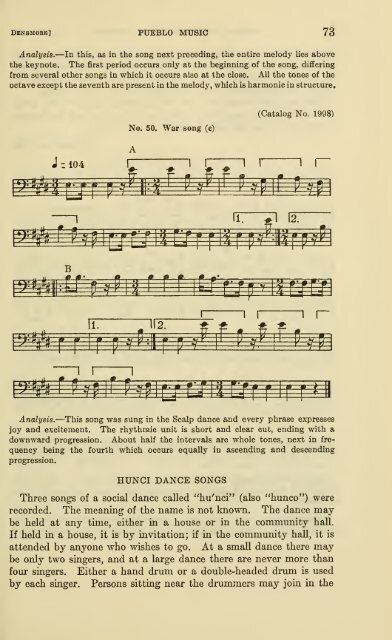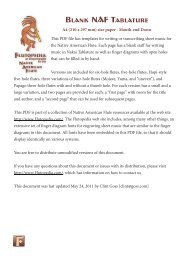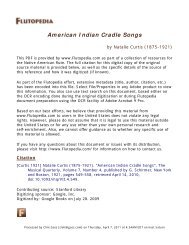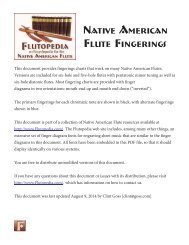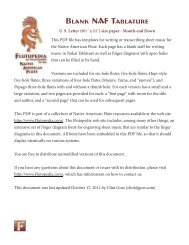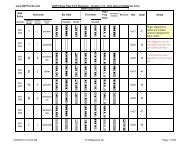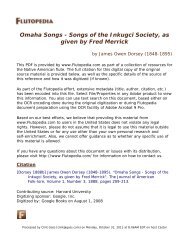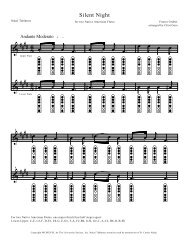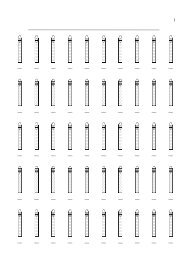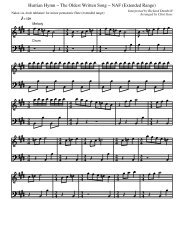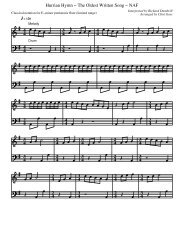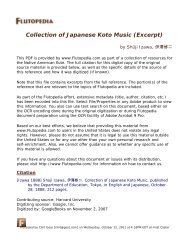Music of Acoma, Isleta, Cochiti, and Zuñi Pueblos - Flutopedia.com
Music of Acoma, Isleta, Cochiti, and Zuñi Pueblos - Flutopedia.com
Music of Acoma, Isleta, Cochiti, and Zuñi Pueblos - Flutopedia.com
You also want an ePaper? Increase the reach of your titles
YUMPU automatically turns print PDFs into web optimized ePapers that Google loves.
^rjiirsf<br />
Lr<br />
—<br />
Densmorb] PUEBLO MUSIC 73<br />
Analysis.—In this, as in the song next preceding, the entire melody lies above<br />
the keynote. The first period occurs only at the beginning <strong>of</strong> the song, differing<br />
All the tones <strong>of</strong> the<br />
from several other songs in which it occurs also at the close.<br />
octave except the seventh are present in the melody, which is harmonic in structure.<br />
No. 50.<br />
War song (c)<br />
(Catalog No. 1998)<br />
A<br />
~<br />
-I--104 C T~l tV* ^ '<br />
tr-m i<br />
IT \2<br />
F-vr tiiTtTii^r'-r rriirp^^^it^^<br />
B<br />
nhhW rrhiH n<br />
\<br />
rfp \m<br />
d—I<br />
i<br />
m<br />
'/•Vt \<br />
h^<br />
\<br />
\ h^<br />
i<br />
f ir r<br />
^<br />
Analysis.—This song was sung in the Scalp dance <strong>and</strong> every phrase expresses<br />
joy <strong>and</strong> excitement. The rhythmic unit is short <strong>and</strong> clear cut, ending with a<br />
downward progression. About half the intervals are whole tones, next in frequency<br />
being the fourth which occurs equally in ascending <strong>and</strong> descending<br />
progression.<br />
HUNCI DANCE SONGS<br />
Three songs <strong>of</strong> a social dance called "hu'nci" (also "bunco") were<br />
recorded. The meaning <strong>of</strong> the name is not known. The dance may<br />
be held at any time, either in a house or in the <strong>com</strong>munity ball.<br />
If held in a house, it is by invitation; if in the <strong>com</strong>munity hall, it is<br />
attended by anyone who wishes to go. At a small dance there may<br />
be only two singers, <strong>and</strong> at a large dance there are never more than<br />
four singers. Either a h<strong>and</strong> drum or a double-headed drum is used<br />
by each singer. Persons sitting near the drummers may join in the


